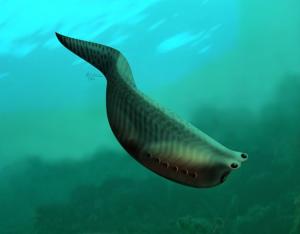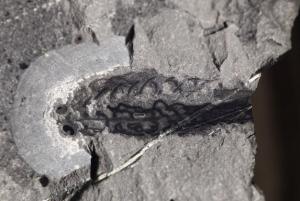When scientists want to study how a new drug or treatment affects the
body they start with cells – disembodied pixels of humanity that can
give us some idea, but not a complete picture, of what would happen in a
living, breathing person. Test tube experiments, trials done “in a
petri dish”, cell cultures, whatever you want to call them, this is the
first line of human experimentation – we experiment on cells because its
safer and (in some ways) simpler than studying whole humans. But that’s
not the same as saying these studies are simple to do.
Historically, the big complication was growing the cells –
coaxing them to multiply and divide outside a human body so that you had
enough of them to perform and replicate experiments without having to
worry about how using a different population of cells would affect the
outcome. But, in the last five to 10 years, as we’ve learned more about
the genetics of the cells we study, a new problem has emerged. It’s
becoming apparent that the choice of specific cells used for a specific
study matters a great deal – and that a lot of the research published
prior to the last decade has been done with the wrong cells.
There are two things that you need to know about cancer cells. First,
is that cancer isn’t just one thing. In fact, different types of
cancers aren’t even a single thing unto themselves. There are many
different types of lung cancers, distinguished by particular genetic
mutations that affect how they grow, how deadly they are, and how easy
they are to kill. The same is true of breast cancer, brain cancer, bone
cancer, and on and on. This is why it’s so hard to come up with the
much-vaunted “cure for cancer” – you’re not curing cancer, you’re curing
lots of diseases that are all called “cancer”. But there is something
that generally ties together all these disparate disorders, and that’s
growth. Typically, cells can only divide 20 or 30 times before they’re
burnt out. Cancer cells don’t have those kind of limitations. The whole
reason they kill is because they can divide and grow, divide and grow,
with nothing to check them and no way for the body to naturally kill
them off.
These two facts play a major role in the story of cell cultures.
The technique of growing live cell lines – identical families descended
from a single cell – has been around since the late 19th century. But as
recently as 30 years ago, almost all these populations were made up of
cancer cells, said John Minna, distinguished chair in cancer research at
the UT Southwestern Medical Center. That’s because it was only cancer
cells that could grow indefinitely, one cell multiplying again and
again, essentially forever. But even then, Minna said, not all cancer
cells lent themselves to easy laboratory growth. “You could take 100
different lung cancers or a 100 breast cancers, and put them in
culture,” he said. “But only 10-to-20 percent would grow.”
Only cancer cells could grow indefinitely and only a few of those
were willing to grow in a laboratory. With no other options, scientists
favored the cell families that were easiest to grow – a choice that
meant there was less risk of a dead cell line mucking up your research
results. Over time, certain cell lines were used so frequently that they
came to be favored because of how common they were – more scientists
knew more information about those cells, which made research done with
them easier to replicate and prove. Even today, said Jennifer Wilding, a
researcher in the department of oncology at Oxford University,
scientists will typically use three or four cell lines for a study – the
same ones other research groups use – chosen based on their ubiquity,
rather than based on what they’re being used to study. “But that isn’t
necessarily a very smart thing to do,” she said.
This is where the genetic differences between different types and
subtypes of cancer become important. Say you’re trying to study a
subtype of colon cancer. If the cell lines you use to research
treatments for that cancer lack some of the important mutations that
distinguish the subtype then all your carefully gathered data might not
mean a thing.
⊙◉◎
Today, when scientists try to get tumor cells to grow in the lab,
they have an 80 percent success rate, instead of 10 percent. That’s
largely due to improvements in laboratory techniques, Minna said.
Scientists have made many changes to the way they grow cells. For
instance, one thing they do is add irradiated mouse cells to the
culture. The radiation leaves the mouse cells unable to grow, but still
alive – a condition that seems to turn them into a favorite food of
tumor cells. “They provide some kind of nourishment that allows just
about every tumor cell to grow,” he said.
Scientists also now have more luck growing non-cancerous, healthy
cells. One way to do this is by manipulating telomeres, regions at the
end of a chromosome that get shorter and shorter each time a cell
divides and its chromosomes replicate themselves. Eventually, telomeres
get too short and further cell division becomes impossible. But if you
add an enzyme called telomerase to the end of the chromosome, you can
artificially make the telomeres longer and effectively get them to grow
forever.
Both of those developments explain why, in the last decade, the
number of cell lines available to work with has grown exponentially
– there are now hundreds to choose from. Scientists use all those newly
available cell families in different ways. Jennifer Wilding, who
primarily studies colorectal cancers, uses lots of different cell lines
derived from colorectal tumors to get an idea of how a particular
treatment will interact with the diversity of colorectal cancer. Instead
of just 3 or 4 lines, she might test a drug on 100. “You can’t just
treat one person and expect it to represent the entire disease,” she
said. “If I choose a limited number of cell lines, or choose arbitrarily
without knowing their genetic makeup, I'm bound to get a very biased
picture.”
That’s the broad perspective. John Minna, on the other hand, is
trying to figure out ways to use what’s unique about a cancer to create
treatments that may only work for one cancer, or one subtype of cancers.
The lung cancers associated with smoking, for instance, can have 100s
or even 1000s, of mutations, and the pattern of mutations is unique to
each individual patient. But if you look at all those different cancers,
there are 10 or so major molecular groups -- cancers that, while not
identical, are similar to each other in important ways. Minna’s goal is
to build libraries of cell lines that represent all the major molecular
groups in many different types of cancer. “So far, 60-70 percent of the
groups are well represented,” he said. “We’ve identified the 20 or 30
percent we don’t have. We just learned that in the past year.”
Both Minna’s and Wilding’s work represents a big shift from how
scientists thought about cell lines in the very recent past – when you
used what would grow easily, without much regard for the specific
qualities that may, or may not, have made it a good match for your
research. Now, they say, as we have more cell lines to work with and as
we’re able to learn more about the molecular specifics that identify
those cell lines, people are starting to go back and re-evaluate old
research.
What they’re finding isn’t pretty. Not only is it becoming clear
that results have been skewed by the use of less-than-ideal cell lines,
in many cases, the scientists weren’t even using the cell lines they
thought they were using. Instead, mistakes in the laboratory meant that
cell lines got mixed up with one another. A common problem: Tough,
fast-growing cells finding their way into a dish of weaker-growing
cells, where they quickly take over. The dish is labeled as being one
thing, but the cells now growing there are totally different. HeLa, the
line of cells derived from the cervical cancer tumor of an African
American woman named Henrietta Lacks, are infamous for invading test
tubes all over the world. “You don’t even need sloppy lab technique,”
Wilding said. “All it takes is for a droplet of HeLa to fall into
another culture. Then it’s survival of the fittest and HeLa is very
fit.”
It can be years before a poor choice of cell line or a
contaminated cell line is noticed. Today, an increasing number of
journals require researchers to run DNA fingerprint analysis on the cell
lines they use, and include that information in the papers they
publish. That way, everyone knows if the cell line is what the
researchers thought it was, and they know whether the choice of cell
lines is likely to affect how the results should be interpreted. But if
you’re talking about a study happened 15 years ago, or even 10, that
analysis might not be a high priority on anyone’s radar. Meanwhile, the
research generated by the flawed studies sits in scientific journals,
altering the big picture of what we think we know about cancer and other
medical problems. In 2007, the BBC estimated that contaminated cell
lines, alone, were responsible for
millions of wasted research dollars – money spent on studies that are now known to be, essentially, worthless.
































